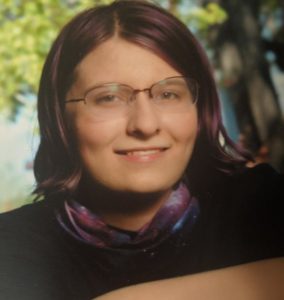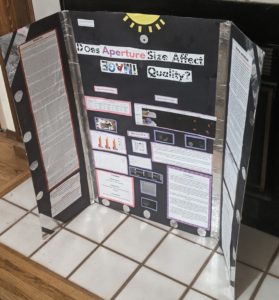Guest blog from Suzanne Eisenberg, a freshman at New Mexico Tech, majoring in astrophysics, and recipient of NMOST’s Advancing Young Women Scholarship
 When I was younger, I never thought I was going to be “good” at science. I didn’t even consider that I could one day have a career in STEM. Now, as a college freshman studying astrophysics, my confidence in my STEM capabilities is a world of difference from where I began. Out-of-school experiences played a big part in my journey.
When I was younger, I never thought I was going to be “good” at science. I didn’t even consider that I could one day have a career in STEM. Now, as a college freshman studying astrophysics, my confidence in my STEM capabilities is a world of difference from where I began. Out-of-school experiences played a big part in my journey.
Growing up, several things made me doubt a potential future in STEM. Like so many students, I struggled here and there in my science and math classes. I concluded that there was no way I could be successful, just because I didn’t feel naturally gifted in those subjects. Also, looking around me, I didn’t know any female scientists whose path I could follow.
Fortunately, there were three important experiences that opened my eyes to the world of STEM, changed my perspective, and helped me get to where I am today.
It started with a community science fair my middle school teacher encouraged me to participate in outside of school. I was apprehensive at first, but her encouragement gave me the confidence to go for it. So I did. I combined my love of photography with my interest in physics and did a project on the lenses of a pinhole camera. Not only did I have fun, I took home second place! It was so cool to bring together these two passions that I thought were unrelated. During the project, I realized that STEM is everywhere you look. Truly, STEM shows up in places you might not expect.
Then, the summer after my junior year, I participated in a Girls Who Code program where I learned the basics of coding. While coding was interesting, it wasn’t really my passion. However, my favorite part of the program was finding a community of other high school girls, like me, who were interested in science. Finding that community was so empowering.
In addition, during that time, I volunteered at the Natural History Museum as a junior docent. This experience showed me how STEM can be used to engage and give back to the community. I was stationed in the astronomy section where I shared information with visitors about things like supernovas and the Mars rovers. This experience is where I really developed my interest in astronomy and I loved being able to share what I learned with my community.
Now, I want to help inspire young girls and people everywhere that a future in STEM is possible for them. Even if you aren’t a math whiz and or straight A science student, the possibilities in STEM are still endless, and that door is never closed to you. There are so many ways to get involved in STEM and find your passion, both in and outside of the classroom. I want everyone–particularly girls–to believe that they belong in STEM, and to pursue those experiences that bring to life their talents and passions, just as I did. After all, STEM is our future and we ALL need to be involved.
The New Mexico Out-of-School Time Network (NMOST) is a proud partner of the Million Girls Moonshot, an initiative of STEM Next. Launched in 2020, the Moonshot is committed to ensuring one million more girls are engaged in STEM learning over the next five years through afterschool and summer programs. NMOST plans to use its Moonshot grant funds to help afterschool programs in the state provide STEM education. The focus will be equity and inclusion for all youth and strategies for increasing the number of girls attending OST STEM programming. Currently, there is no coordinated strategy in NM to share best practices on gender inclusion and equity with OST providers. To fill this gap, NMOST will expand the existing system building efforts and convene organizations working with girls in STEM to create a vision for the next ten years and draft guidelines on how to expand access for girls in OST STEM programming. Another of the OST STEM equity initiatives is the annual Advancing Young Women in STEM scholarship program, which is intended to support young women pursuing or planning to pursue a degree and a career in a STEM-related field. Suzanne Eisenberg was one of this year’s recipients.


